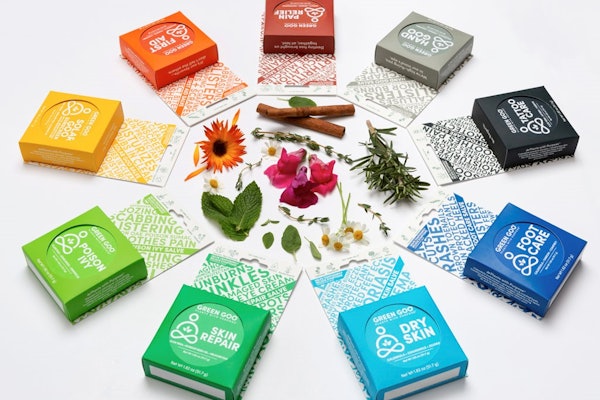Type One optical-quality pharmaceutical glass has a new challenger in multilayer plastic barrier bottles. One major producer of blood culture bottles, bioMérieux, Durham, NC, has been shipping virtually all of its BacT/ALERT products in the new containers since early fall of last year.
The bottles hold 78 cc of what bioMerieux calls “media” and have a 20-mm finish. Developed jointly with Owens-Illinois Plastics Group, the injection/blow-molded containers have inner and outer layers of polycarbonate with a center layer of nylon. Because the products are designed to collect potentially infected blood specimens, the plastic containers, according to bioMérieux, are a first in blood culture container safety.
And safety is the primary advantage to laboratories and hospitals that use the bottles. The U.S. Occupational Safety and Health Administration has been strongly encouraging medical companies to shift to plastic containers to achieve compliance with its Bloodborne Pathogens Standard and other mandates.
These containers are used by medical practitioners to withdraw potentially infected blood samples from patients and then transport the containers to a laboratory where the samples can be analyzed by a highly technical instrument that detects the presence of microorganisms. So at any point after the blood has been withdrawn, there is a serious safety concern with the potential of the container being broken and someone, from the nurse to a laboratory technician, becoming exposed to the bloodborne pathogens. In one report regarding this risk, the cost for an employee contracting hepatitis or human immunodefiency virus (HIV) could be in the range of $500ꯠ.
In the case of bioMérieux, which supplies both the instruments and the bottles containing the media, the instrument optically reads a silicone sensor in the bottom of the bottle. This technology was originally developed by Organon Teknika. Its diagnostics division was acquired in 2001 by bioMérieux, based in Marcy-l’Etoile, France.
The project to develop a plastic container replacement to the Type One glass containers began with Organon Teknika and continued with the same staff after the acquisition. In fact, as staff engineer Chris Ronsick, Ph.D., said on the second day of bioMérieux’s production in plastic containers, “I’ve been waiting nine years for this day.”
Tough requirements
Why did the development take so long? The new bottles had to meet a sizable list of requirements before they could be put in use. First, the new bottles had to display the same optical clarity as Type One glass so that the instruments would function appropriately. Second, they had to be able to withstand a vacuum. On its packaging line, bioMerieux pulls a vacuum and inserts a gas after the media are filled into the bottles and immediately before the stoppers are inserted.
Third, once aluminum overcaps and plastic dust covers are crimped on, the bottles undergo terminal sterilizing. Finally, the plastic bottles must maintain the integrity of the contents for a shelf life of 12 months or more. These requirements are not easy to achieve in a plastic container.
“We worked with lots of different materials for their barrier performance,” says Ronsick, “but they never achieved the functionality we needed until this. This container is really a transparent change to our customers, except that it’s lighter and it doesn’t break so it’s safer. These bottles are virtually indestructible. I’ve yet to break one, and we did a lot of testing.”
Different finish
One difference that users might recognize is that the 20-mm finish on the new plastic containers is a bit smaller than the 28-mm size of the previous glass bottles.
“Aside from its size, the stopper didn’t really change in the move to plastic,” Ronsick says. He declines to identify the source but says it’s a stopper often used for lyophilized (freeze-dried) products that can accommodate the vacuum/gassing cycle. Since some products are used to measure anaerobic bacteria, nitrogen is required, Ronsick points out. The aluminum and plastic overcaps come from several sources. However, the company declined to identify suppliers other than Owens-Illinois.
At bioMérieux’s Durham facility, the new plastic bottles created any number of changes, especially to the filling and packaging line. For example, there was an adhesion issue involving the insertion of the polymer-based sensor. “This was pretty significant because the sensor has to be in the right place when it’s read by our instrument,” Ronsick notes.
He declined to divulge the specifics of the changes, but he did say that the sensor insertion is now done in three steps: spray of an adhesion promoter into the inside base of the bottle; insertion of the silicone-based sensor; and, finally, heat-curing of the adhesive just before the media solution is filled into the container.
The instrument is based on a patented colorimetric sensor technology, and each bottle is monitored for microorganism growth by a sensitive reflectometer. The color of the sensor reflects the level of carbon dioxide in the container, says Louise Grant, senior marketing manager for microbiology in the United States. More than 6ꯠ BacT/ALERT instruments are installed worldwide. The conversion to plastic bottles, Grant says, required only a change to the software for the instruments.
Extra benefits, too
Some changes were required in the bioMerieux packaging line. In the past, says Grant, glass bottles came in tiers, all upright and neatly shrink-wrapped, while plastic bottles are shipped in a bulk bin.
“With glass bottles, feeding the packaging line was done manually,” points out Ronsick. “We had to have a person remove the plastic wrap from a ‘brick’ of bottles and put that group of bottles onto the infeed conveyor. To run plastic bottles, we added a bottle unscrambler with an overhead hopper. That machine helped us cut down on labor costs.”
For the most part, only adjustments and modifications were required for the filling, stopper inserting, and overcap application functions of the line. Once the bottles are sealed and capped, they are ready for the batch autoclave. After autoclaving, the bottles are quarantined while bioMérieux tests batch samples, Grant says. “We label and pack the bottles a day or more after filling,” she says. “Our line makes one lot number and one product each day.”
Labeling of the new bottles has become simpler. With the glass bottles, first a clear shrink-sleeve label was applied and shrunk over the entire bottle. At a second station of the labeler, a spot pressure-sensitive label was applied with appropriate product identification and bar codes. “The shrink-sleeve label was a safety measure,” says Ronsick. “In case the glass bottle would break, it would help contain the shards of glass.” This part of the labeling system is no longer used with the plastic bottles.
But the new p-s label also includes a removable tab that the lab can use for part of its documentation.
Beyond the labeler, secondary packaging is much the same as before. A group of 25 bottles is loaded into a molded-pulp tray, then overwrapped with film. Four of these trays are loaded into a 100-count corrugated shipper.
“Although the pulp tray was used for added protection for the glass bottles, we kept it for the plastic bottles because it’s convenient for our customers,” says Ronsick.
Tremendous reaction
“We’ve converted all of our customers to the plastic bottle for all of the products that we pack in plastic,” Grant points out. Some low-volume products have yet to make the switch because bioMérieux worked to develop modified media formulas for the high-volume products first.
Grant tells of one customer that began to receive the plastic bottles as part of the pilot program. “Over a short period, our volume with this customer was much higher than anticipated,” Grant says. “When I called to tell them that we might have to ship some product in glass, our contact there responded, ‘No, you can’t. We no longer have the ability to transport glass in our institution.’ It turns out that after we started shipping plastic bottles to them, this institution switched from manual handling of glass to using a pneumatic tube to transfer the plastic bottles to their lab.”
See sidebar to this article: From food to pharmaceuticals



















